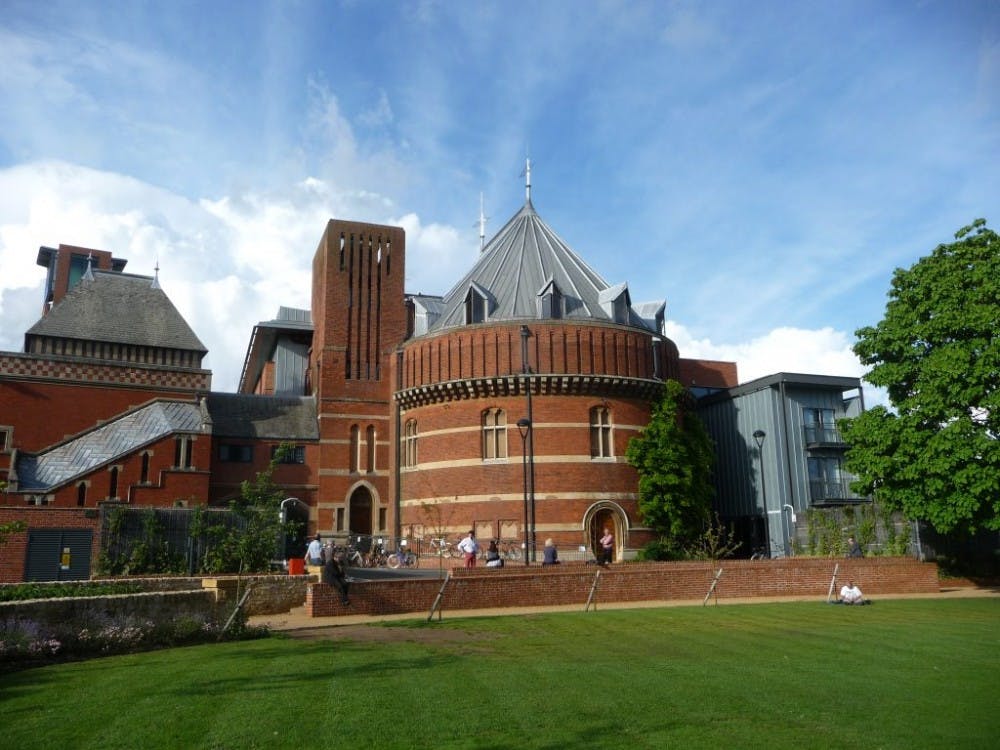Over the break I certainly spent a lot of time eating, sleeping and generally trying to unwind while not thinking about my approaching finals. Although my time spent out of the house was sparse, I went to see a groundbreaking performance of William Shakespeare’s The Tempest at the Royal Shakespeare Theatre in Stratford-upon-Avon, Shakespeare’s birthplace, in Warwickshire, England.
Unbeknownst to me prior to the show, this is the 400-year anniversary of the Bard’s death. For all its faults one thing 2016 can boast is a series of astounding productions of some of his best plays by the Royal Shakespeare Company (RSC). The winter 2016 season consisted of King Lear and Cymbeline alongside The Tempest.
The standard of the RSC has risen to tremendous heights in recent years as they have recruited the best performers, producers and resources available in the industry. For this particular interpretation they partnered with Intel, a global software and technology magnate, and The Imaginarium Studios, a motion-capture artistic studio founded by the acclaimed Andy Serkis, to create never-before-seen digital effects.
These effects primarily concern Ariel, a spirit, who serves Prospero, one of Shakespeare’s more magical characters. Ariel is brought to life on stage by actor Mark Quartley, but he is also projected as a hologram that floats over the stage, at times using his magic to turn into a bat-like creature or appearing to turn the stage into the inside of a tree.
The months preceding the show saw a massive buildup of hype orchestrated by the RSC. The promotion primarily focused on the implementation of these technological effects, rather than the return of the acclaimed Simon Russell Beale to the company after 20 years as Prospero.
Admittedly the effects were spectacular and even more impressive when one considers that they were created in real time by actors who are on stage. However, they tend to reduce or overshadow the humanity that drives a theatrical performance.
Sarah Ellis, a representative of the team from The Imaginarium Studios, writes in the program that theatre has always had a relationship with technology. She and her team look to add new dimensions to this production, features that open a door to future possibilities of innovation.
It is undeniable that theatre has always worked closely with technology. In ancient Greece machines such as cranes often elevated those portraying gods. Masks worn by lead actors were designed to project their voices to spectators. Today theatre relies on lighting, sound and machinery to produce visual and auditory effects for the audience.
These innovations, however, are not at the heart of theatre. They enhance, rather than create, the production. Sir Ken Robinson, a British author and speaker, says that everything can be taken away from theatre but the actor and the audience.
Lighting, sound effects, a set or a script can all be removed because the crux of theatre is the relationship between actor and audience, and that is something that is continually tested by technological innovations.
This is reflected in reviews for the show, which commonly acknowledge that the effects are noteworthy in that they eclipse the actors as the most compelling part of the show.
A review in The Guardian, one of the most widely-read newspapers in Britain, focused more on the acting, especially on Beale’s performance as Prospero. Although it calls the visuals impressive, it argues that fears of digital technology upstaging the actors are unfounded.
The same review later purports that the use of advanced technology is a one-off experiment, rather than the future of theatre, because audiences don’t go to the theatre looking for impressive visuals. Rather they seek emotional engagement.
A reviewer in Ars Technica, a premiere technology magazine, wrote that the concepts brought to life by the RSC in The Tempest sounded thrilling on paper but were underwhelming on the stage. The review cited the technology as impressive but ultimately a side-show, one that distracted from or obstructed the main event — the live performance on stage.
Rather than wishing the holograms had been done away with, however, this reviewer called for them to be expanded. In particular, the review pointed out that the inclusion of the physical Ariel on stage alongside his holographic counterpart showed a lack of confidence in the technology.
The review goes on to state that, in the instances in which Quartley is on stage with his digital counterpart, the actor is typically more interesting to look at anyway and becomes the focus of the audience’s attention. This evaluation reflects The Guardian‘s view that the audience was more engaged by the actor, as opposed to the effects.
It is clear from this production that use of advanced technologies in theatre is still in the tentative experimental phases. What’s unclear is whether they will continue to be incorporated at greater lengths, becoming the future of theatre.
Most audience members with whom I spoke echoed the reviews: The effects were impressive but inferior to the acting. The mark of this show, as with any, remains the strength of the performers rather than the innovation of design.





